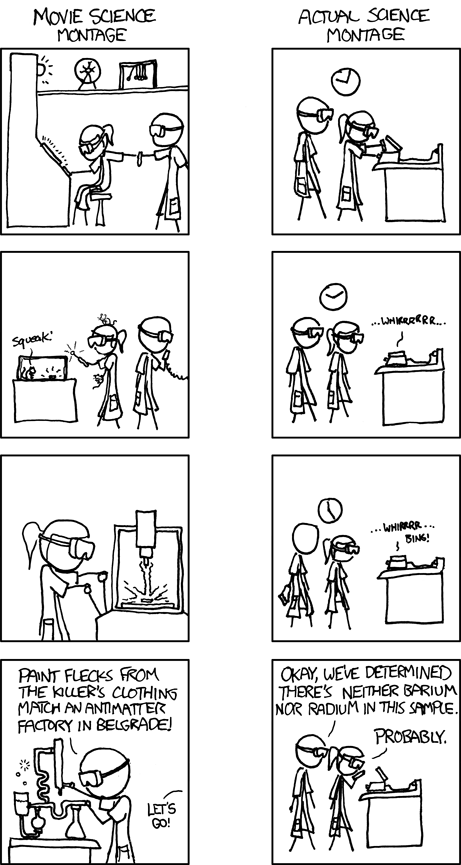Eyewitness testimony has never been incredibly reliable (especially when it comes to race), but Dr. Gary Wells, a professor at Iowa State University, has taken an interesting approach to demonstrate just how unpredictable and difficult eyewitness testimony can be.
Wells created a video of someone planting a bomb on the roof of a building (probably not a real bomb, unless he had one hell of an IRB proposal! Am I right people? HEY-OOOOO!) The idea is for you (yes you) to watch the video, and then identify the suspect in a police lineup. You can watch the video here.
By the by, I’m sure Dr. Wells is a swell guy, but try to avoid his Web site if you can. It’s only slightly better than any Top 40 radio station Web page, though, admittedly, it’s still not as bad as this monstrosity of Web site design.
Okay, have you watched the video yet? Go ahead and do so–spoilers ahead.
I do think not having the guilty man in the lineup is a bit cheap, considering that the page actually reads, “Can you identify the bomber on the roof from the lineup? Click on the number of the lineup member you identified.” So, it definitely suggests that the culprit is somewhere in the lineup and your options are limited to those on the screen. A little ridiculous–it’s like chastising your students for not writing in “None of the above” on a multiple choice exam or telling your roommate that his lost keys are definitely somewhere in the apartment (Ha! They were at the zoo the entire time, IDIOT!”).
IRregardless, it’s still intriguing. Wells can talk all he wants to about eyewitness testimony, but I look at this from a media perspective. Just as juries continue to insist on nonexistent forensic evidence from their favorite CSI spin-offs, this mini-experiment speaks to the power of television.
Basically, cultivation theory states that television shapes the way we understand the world around us, at times so profoundly that we behave and believe irrationally. This study is a perfect example of that. Quick, when was the last time you sat through a police drama and they showed a lineup without the bad guy involved. Probably never, because it’s unheard of. You either put the guy in the lineup and he’s eventually convicted, or the witness refuses to identify the bad guy (in which case they have to turn to Detective Infringeonrights, who doesn’t play by anyone’s rules (not even his own)). And why wouldn’t you? If you actually showed the pure monotony of forensic science or being in the courtroom or filing paperwork on a car crash…well…it would not make for compelling television (see Fig. 1).
Fig. 1
However, in the process of making TV more predictable, it has molded our expectations the same way. Of course the guy is in the lineup, because few of has have ever (or probably will ever) be in that situation. So, we draw on the next best thing: television. It becomes our sole reference point for solving problems and, in the process, we actually end up creating a few.
I would love to see this conducted as an experiment–show the video to two groups, but make sure the first just watched a couple of episodes of Law & Order. I’d love to see those results.
Dr. Wells, I understand your argument (and it makes sense, especially from a hegemonic standpoint). But you may want to consider the added impact of media and how cultivation theory may be shaping our beliefs.





